This Sourdough Sandwich Bread recipe is fluffy and hearty. It is a yeasted loaf bread that uses either sourdough discard, leaven, or faux starter for flavoring. It can be made with varying percentages of whole wheat flour for extra substance.
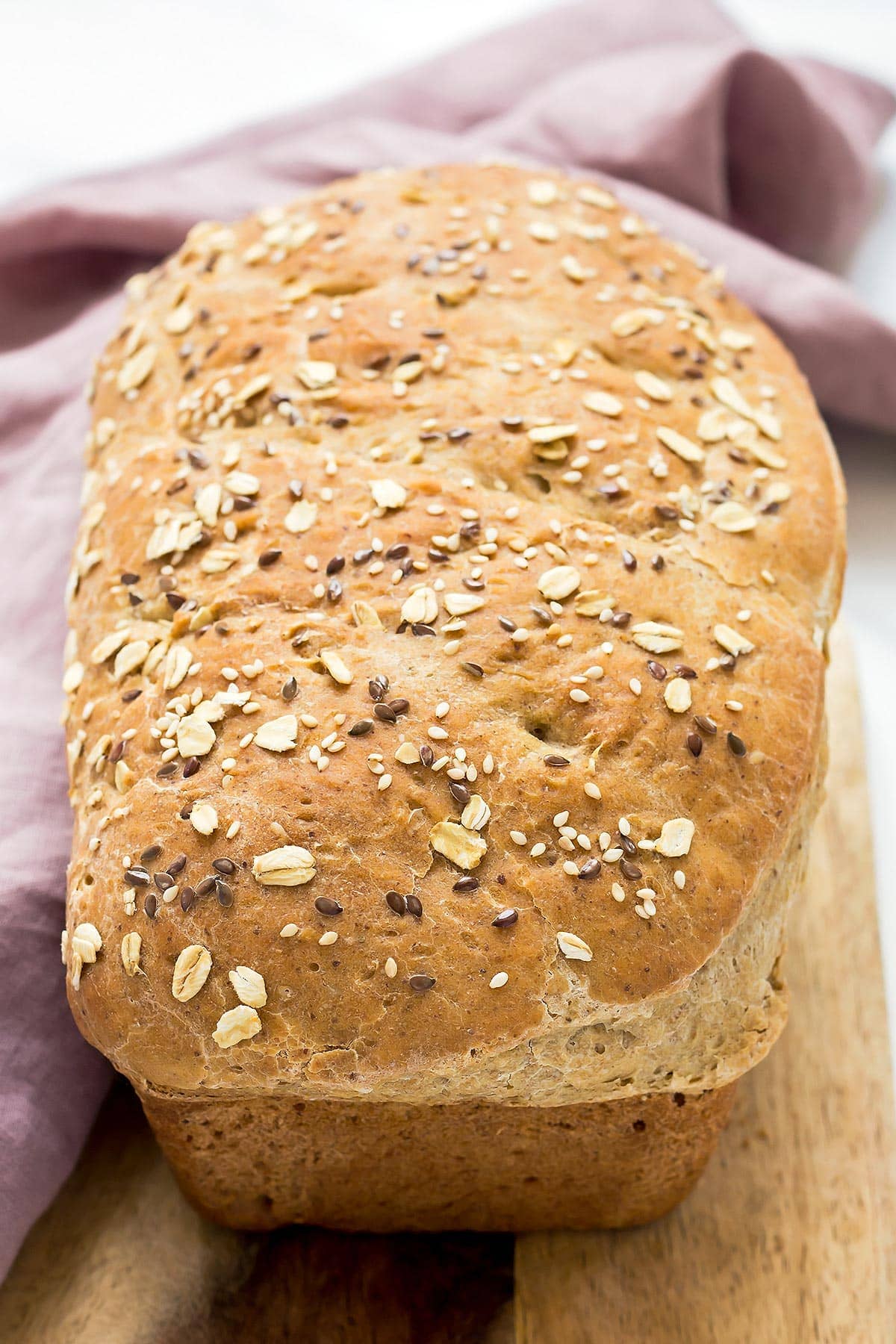
What is a Leaven?
A leaven is a mixture of water, all-purpose flour, and sourdough starter that goes into bread dough for a sourdough recipe. Basically, it is a blend of flour and water that becomes a bread leavener through the process of fermentation. In the case of this recipe, the leaven ferments on the counter for 6 to 12 hours. So be sure to start it well before you are ready to bake your bread.
You will know that it is ready to use in your bread dough when it is slightly sour-smelling and bubbly. For those who enjoy a less sour taste in their bread, go for a shorter amount of time. People who love really tangy sourdough, however, may prefer to let the leaven sit for the full 12 hours.
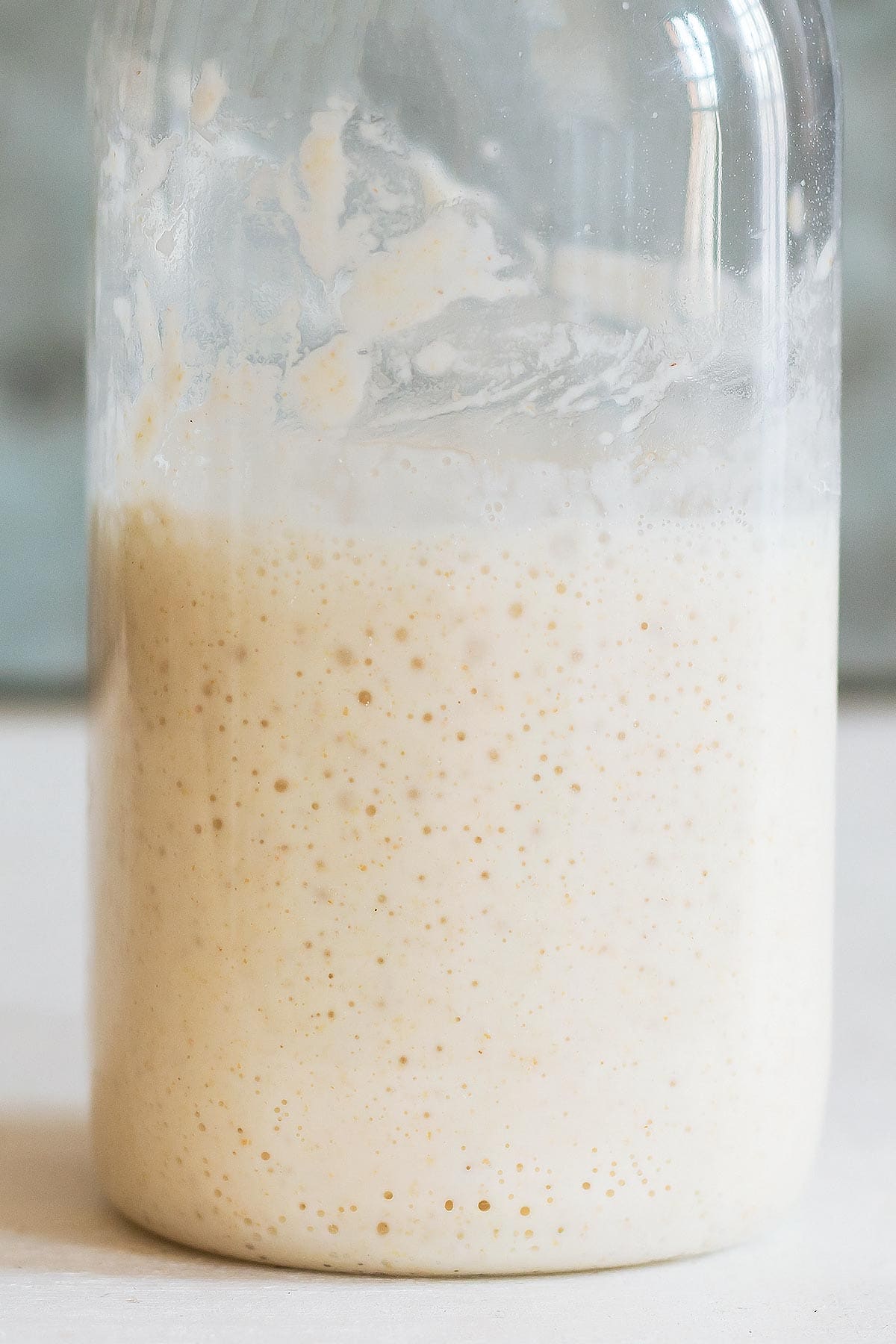
Sourdough Starter
A starter is a blend of all-purpose flour and water that sits on a counter to activate the natural yeasts from the flour and also to collect additional yeasts from the air and environment. The starter requires regular feedings of additional flour and water to ensure that those yeasts stay active and develop into something that is strong enough to raise bread dough.
However, at each feeding, the baker needs to discard a portion of the starter, as it is simply not needed. If you have plenty of discard (¾ cups worth), you can use that to replace the leaven in this bread. It will give the loaf a delicious. strong and tangy sourdough flavour.
Sourdough recipes like this one or my Sourdough Biscuits an excellent place to use the sourdough discard. However, if you have a lot and really don't want to get rid of it, you could place it in the freezer. Simply put it in a sealable container to freeze. When it is thawed, you can use it in discard recipes. Otherwise, it will need a few daily feedings to activate it again.
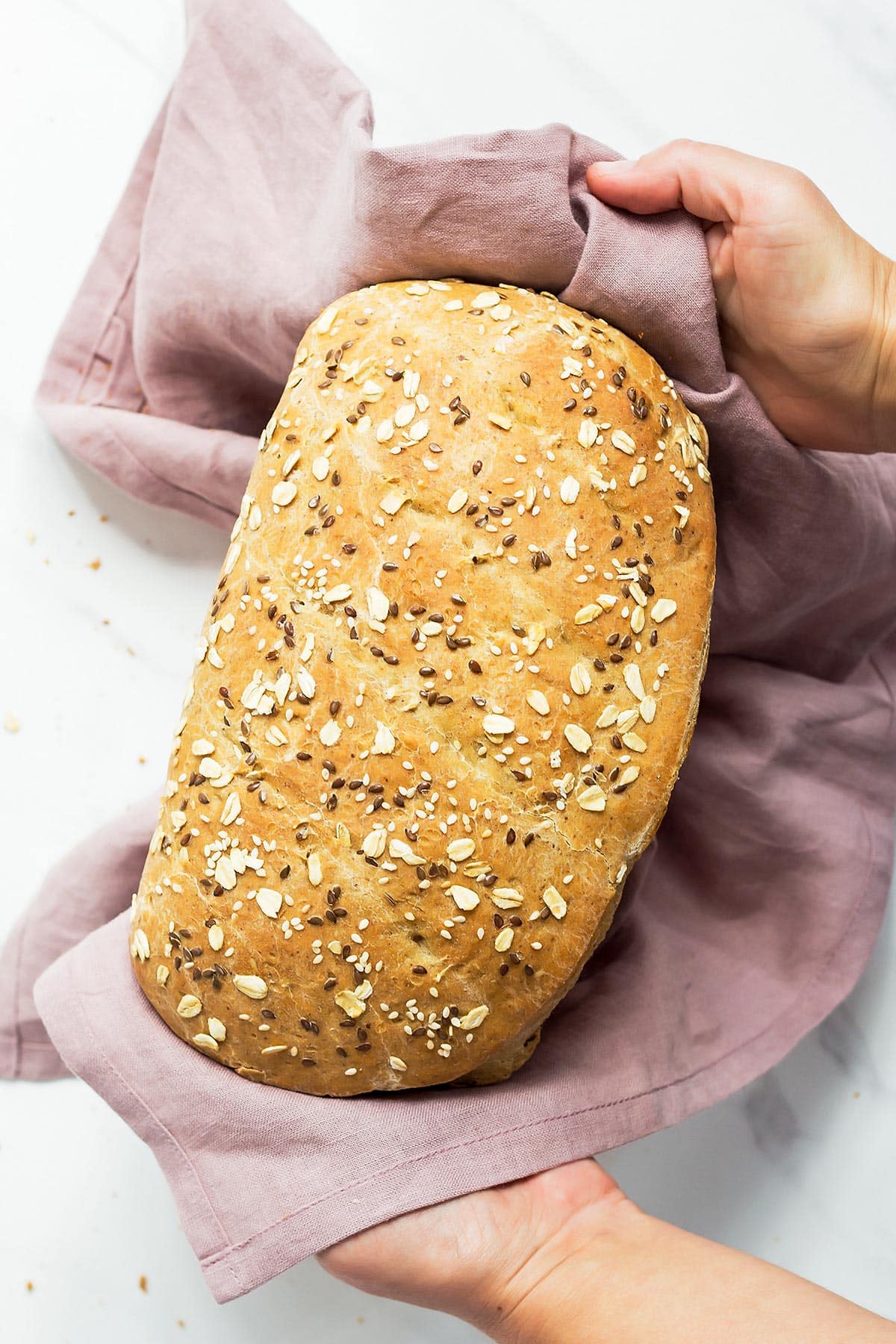
Faux-Starter Option
Even if you don't have any starter around, you can still make this sourdough recipe. My friend Lorena taught me another way to make a starter in her Artisan Bread Recipe. To avoid confusion with the other mentions of starter and leaven in this post, I am calling that one faux-starter.
For faux-starter, you also make a leaven the night before baking, but instead of 1 tablespoon of sourdough starter, ½ packet of yeast is used. The yeast gets mixed with the flour and water like the sourdough starter would have and sits overnight to ferment into a bubbly, tangy mixture. This process makes for a more flavourful bread than omitting starter altogether. It just might not result in quite as tangy a loaf as when it uses sourdough discard or starter.

Two Rises
Making bread at home can be time-consuming, however, most of the time is hands-off. The dough undergoes two rises. The dough rises for the first time in a bowl after kneading, while the second rise happens in the loaf pan after shaping.
The first rise is part of the autolyse process, which is where protease and autolyse enzymes start to work. Basically, the protease enzymes break down the protein in the flour, whereas the autolyse enzymes make the sugars in the flour more accessible to yeast.
Proofing Dough in the Instant Pot
You can use your electric pressure cooker like the Instant Pot on the Yogurt setting to speed up the first rise. The moderately warm temperature needed for yogurt incubation also creates the perfect environment in your Instant Pot for proofing dough.
Simply grease the inner liner, add the dough and close with a lid. I am using a glass lid, so I can watch the dough and see when it has doubled. Using the Instant Pot reduces the rising time from a minimum of 45 mins (at room temperature) down to 20 to 30 minutes.
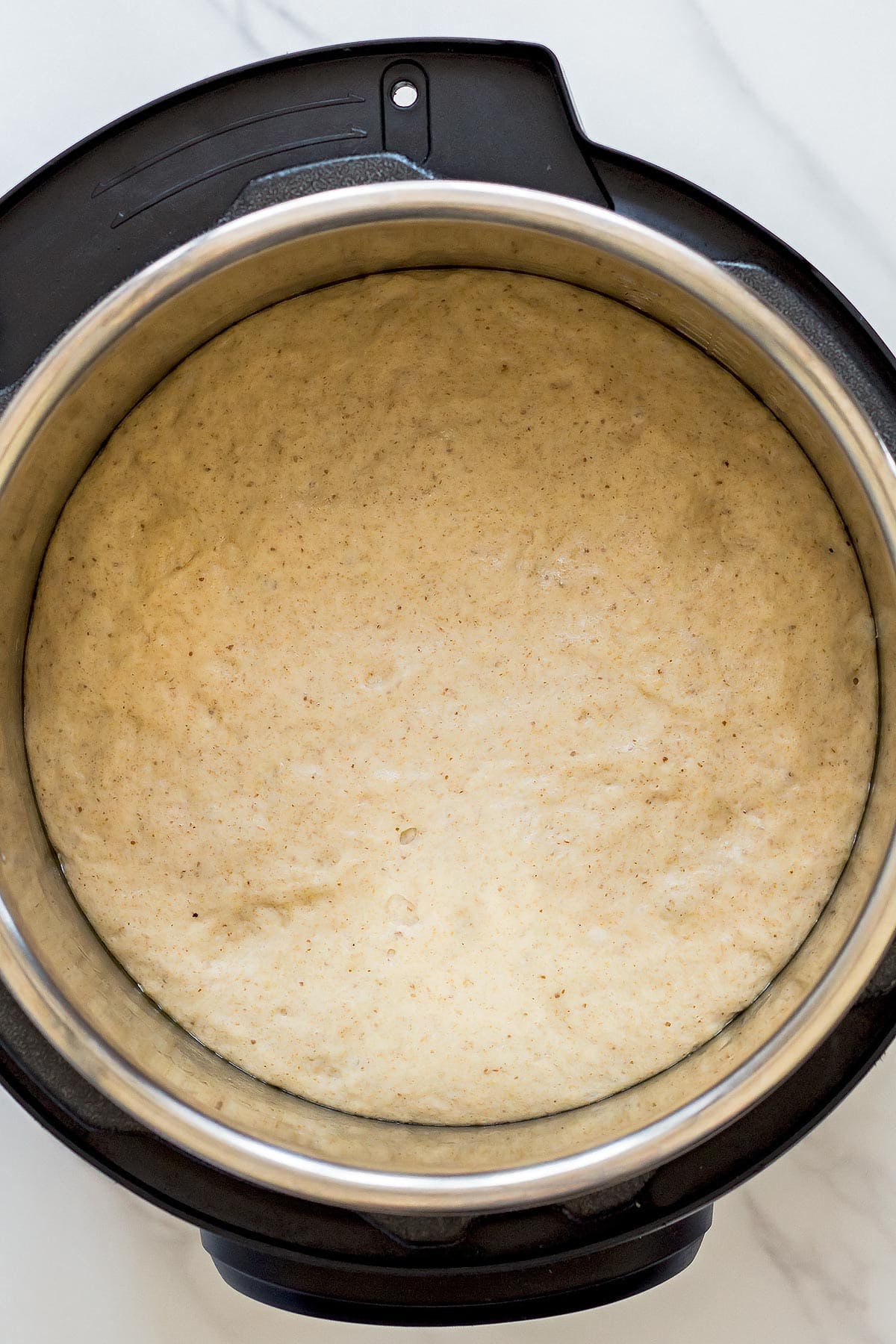
When you let the dough rise at room temperature a second time, it helps with the structure of the bread. After shaping a bread dough, a lot of the air bubbles that the yeast created are pushed out of the dough. By letting the dough sit in the pan, it has the chance for the yeast to work again - producing more air and bubbles in the dough.
This helps the bread form a finer, fluffier crumb than it would have otherwise. This step is also called proofing and is the last thing the bread needs to do before baking.
How to shape the dough
Shaping the dough properly is important for a proper bread structure. Shaping a bread correctly means that it should rise in a uniform way during baking. Also, it will ensure that the bread has a smooth top once it is baked.
The process is relatively simple. After the first rise, turn out the dough on the counter and gently stretch it out by hand. Next, fold in one-third of the dough from the right towards the center, followed by one-third from the left. Now, roll up the dough tightly from the bottom and slightly tuck in the ends. Then you can put the sandwich loaf in your prepared loaf pan and let the dough rise for a second time in the loaf pan before baking.
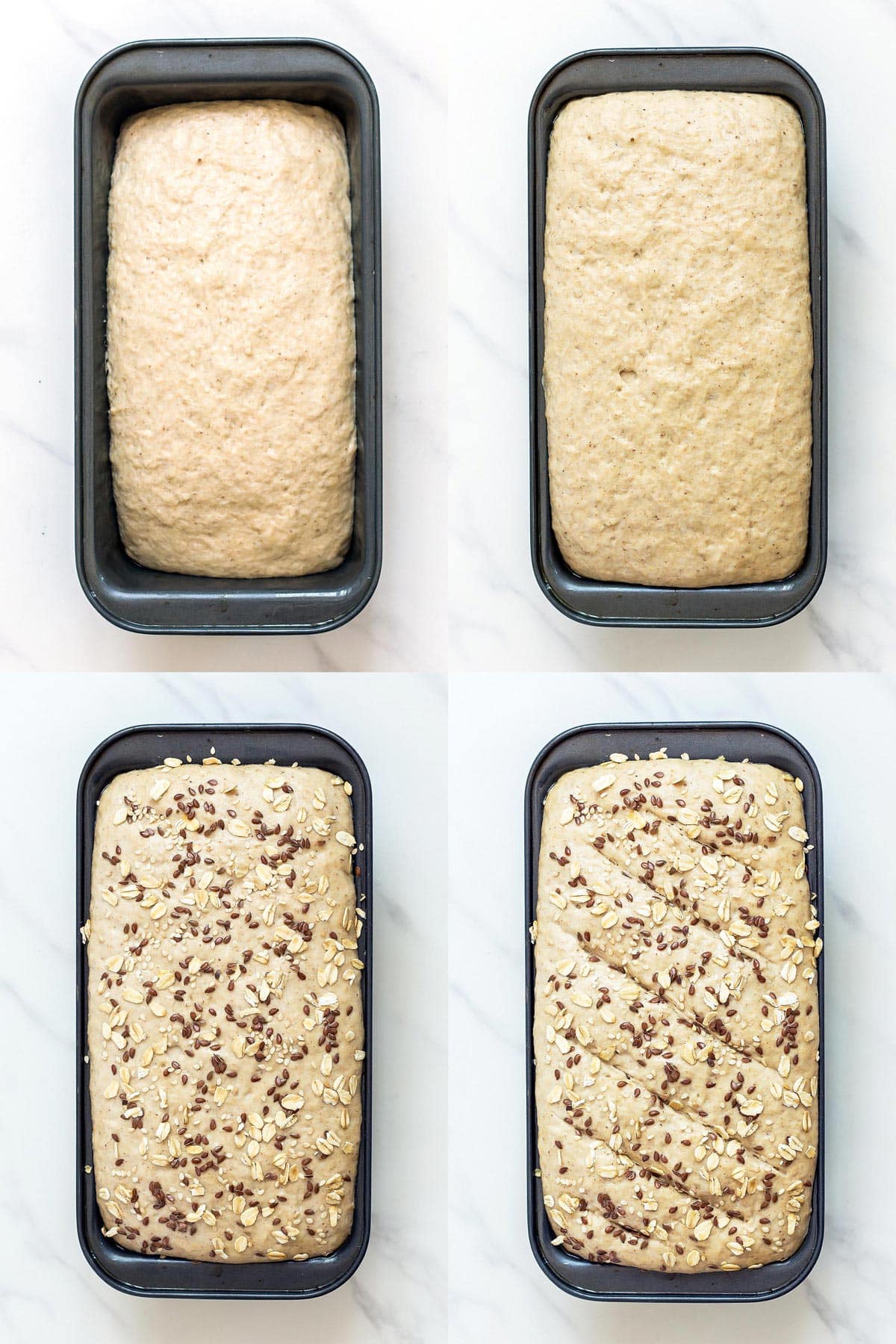
Toppings
If desired, you can jazz up your sourdough bread with some toppings as a garnish. I like to add a mixture of seeds (flax + sesame) and rolled oats. Other options are sunflower seeds, poppy seeds, caraway, hemp, pumpkin seeds, millet, and more. These not only make the loaf look even more attractive and delicious but also add some hearty nutrition in the form of fiber and healthy fats.
When adding toppings to your bread, be sure to brush the top of the dough with water in order to help the seeds and/or oats stick. Otherwise, the seeds won't adhere during baking as the exterior becomes crispy.
Storing Sandwich Bread
While bread is delicious out of the oven, it can dry out quite quickly. Simply cover it tightly to protect it from drying out. You can wrap it tightly with foil, place it in a sealable bag or in a large airtight container. It should be able to keep at room temperature for several days like this.
If your bread does dry out too much to enjoy fresh, you don't have to throw it away unless it has turned moldy. Instead, toast it for breakfast or thinly slice or cut into cubes for crostini or croutons. Alternatively, you could use this stale bread in a bread pudding to give it new life.

Freezing Sourdough Sandwich Bread
For longer storage, slice the entire sourdough loaf once it has fully cooled. Then, place the slices in an airtight freezer-safe container or bag. To use, take out only as many slices as needed. Defrost at room temperature (only takes a few minutes) or toast for that freshly baked taste.
Frequently Asked Questions About Baking Sourdough Sandwich Bread
Baking this sourdough sandwich bread or any other bread can be a complex process. Here are some frequently asked questions from Leelalicious' readers along with a few general questions about bread baking.
Can I Replace the Whole Wheat Flour with Another Type of Flour?
Yes, you can, although the bread may have slightly different results. For example, if you replace the whole wheat flour with rye flour or multigrain flour, the loaf may be denser and less fluffy than it normally would. A denser loaf isn't a bad thing, just a matter of preference.
Can I Adjust the Water if I Need to?
Yes, feel free to increase or decrease the amount of water you use in the sourdough sandwich bread recipe as needed. Humidity levels and times of the year can affect how much water your bread dough will need along with the type of flour you use or the flour brand.
Can I Omit the Flaxseed?
The flaxseed adds some textural contrast to the bread and absorbs some of the moisture, but is not an essential ingredient if you don't care for it. Some readers have noted success making this bread when they omitted the flaxseed in this bread recipe.
Does the Bread Need to Cool Completely Before Slicing?
While you may be tempted to slice into your bread early while it is still warm, it is best to wait until it is cooled before slicing. The bread continues baking after it comes out of the oven, so if sliced too early, the bread slices may be too soft and difficult to cut.
I Don't Have a Large Mixing Bowl. What Can I Use Instead?
If you don't have a large enough mixing bowl to accommodate the quantity of dough this sourdough bread recipe makes, you could mix it in a food-safe plastic tub or a Dutch oven instead. Whatever food-safe vessel you have that is large enough to hold the dough will work perfectly well.
Random Questions
Yes, sourdough bread's hearty texture and distinct flavor make it a great choice for sandwiches, providing a robust and satisfying base for various fillings.
Scoring the top of the sourdough sandwich bread before baking helps control the direction of its expansion, resulting in an appealing aesthetic and a well-shaped loaf.
When stored properly, homemade sourdough sandwich bread can stay fresh at room temperature for several days. It can also be frozen for longer-term storage, maintaining its quality for up to a few months.
Dryness in sourdough sandwich bread can be caused by factors such as overbaking, insufficient hydration, or improper storage. Ensure the right baking time, appropriate moisture levels, and proper storage to maintain its freshness.
Recipe
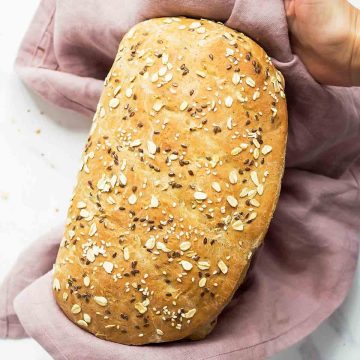
Sourdough Sandwich Bread
Ingredients
- 200 grams sourdough discard
Or make Leaven the night before:
- 100 grams flour I use half all-purpose, half whole wheat
- 100 grams filtered water
- 25 grams sourdough starter or 3.5 g instant yeast (½ packet)
Loaf Ingredients
- 177 grams filtered water add more if needed to make a smooth dough
- 40 grams honey or maple syrup
- 21 grams olive oil or avocado oil, softened butter
- 3.5 grams instant yeast ½ packet (not for long-fermentation)
- 320 grams all-purpose flour
- 113 grams whole wheat flour or use up to 50% ww flour (makes a denser loaf)
- 14 grams flax meal
- 10 grams sea salt
- toppings like sesame, flax, or oats
- 1-2 tablespoons melted butter optional
Instructions
- If you don't have sourdough discard to use up, make a leaven the night before. Stir together flour, water, and a tablespoon of sourdough starter (or instant yeast). Cover and let sit overnight (6-12 hours).
- In the morning, dissolve the sourdough discard or leaven in ¾ cup of water. Then stir in the honey, oil and instant yeast.
- To a large bowl add the both types of flour, flax meal, and sea salt. Pour the liquid ingredients over top and start to mix everything together in the bowl.
- Once the bread dough starts to form, turn it out on a floured surface. Knead the dough for about 15 minutes by hand until stretchy and elastic. Alternatively, you can use a stand mixer with dough hook for about 5 minutes.
- Add the dough ball to an oiled bowl. Cover and let rise until doubled for about 45 minutes. Or let the bread dough rise in the oiled inner liner of your Instant Pot on the Yogurt setting until doubled (20-25 minutes).
- Grease a loaf tin with a little oil or line with parchment paper.
- After rising, turn the dough out on the counter. Flatten gently, then fold over ⅓ from the right, then ⅓ from the left. Now roll the dough up tightly from the bottom to form a loaf shape. Tuck under the ends slightly.
- Place the dough loaf in the greased tin. Cover the loaf and let rise for 1 hour.
- Preheat the oven to 350°F (190°C). If desired, brush the risen loaf top with water and sprinkle seeds/oats all over. Make diagonal cuts across the top. Then place the loaf in the oven and bake for about 40 minutes until it looks golden brown and sounds hollow.
- Optionally, brush the top of the sandwich bread with melted butter as soon as you take it from the oven. Then unmold from the tin and let the sourdough sandwich bread cool completely (on a wire rack) before slicing.
- To store the bread for longer than a couple of days, slice it, then freeze airtight. Toast the frozen slices as needed, for a freshly baked taste.
Long-Fermentation
- To make this sourdough sandwich bread without any yeast, you need to long-ferment it with 200g active sourdough starter (not discard).
- Around mid-day/early afternoon make the leaven with 100g flour, 100g water, and 25g starter so that it is active and bubbly at night time when you make the bread dough.
- When the leaven is at its peak (6-8pm), combine it with the other loaf ingredients (water, honey, olive oil/butter, flours, flax meal, and salt - NO yeast).
- First stir them together with a wooden spoon, then once a dough forms, knead it by hand (10-15 mins) or with a stand mixer (5 mins) until soft and elastic.
- Shape the dough into a ball and add to a large oiled bowl. Cover the bowl with a lid/plate/plastic bag, and let the dough ferment at room temperature for about 12 hours.
- In the morning, the dough should have at least doubled in size. Spread it on your counter in a rectangular shape, fold in the sides, then rolls it up tightly from the bottom.
- Place the dough roll into a parchment lined loaf pan (8x4 or 9x5). Cover it with a towel or plastic bag, and let rise at room temperature until doubled (1-4 hours depending on your kitchen's temperature).
- Then preheat your oven to 350°F.
- Once the loaf is doubled in size, you can score the top with a few diagonal lines. Bake the sandwich loaf for 40-45 minutes until golden brown on top.
- Remove from oven and optionally brush the top with melted butter. Then remove from the baking pan and let the loaf cool completely before slicing.
Nutrition
Pin Sourdough Sandwich Bread recipe for later?
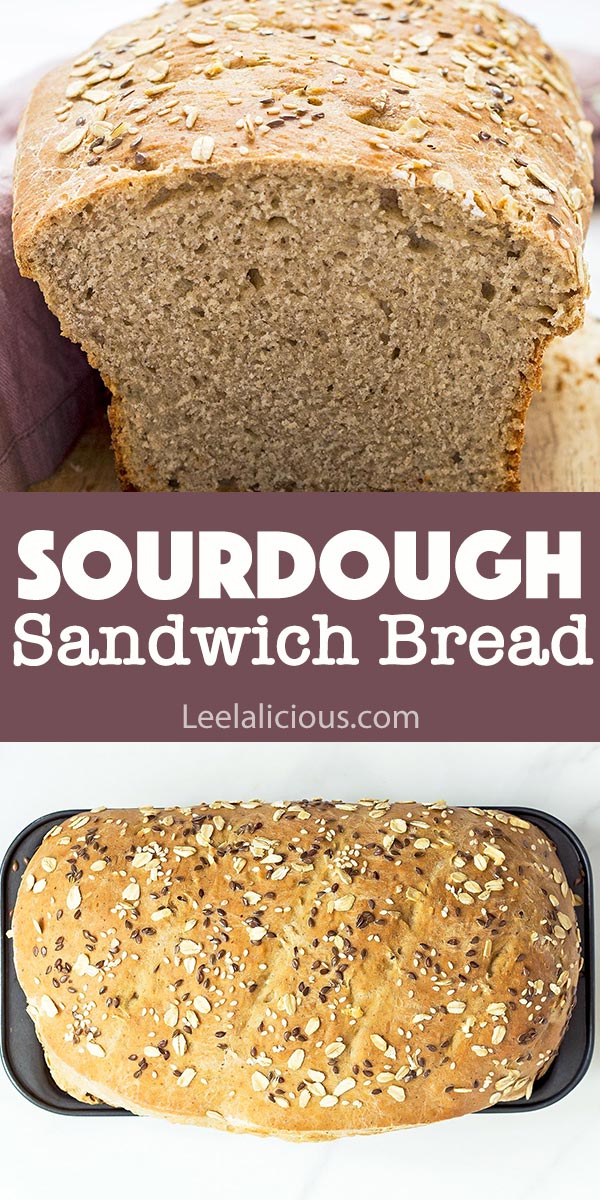


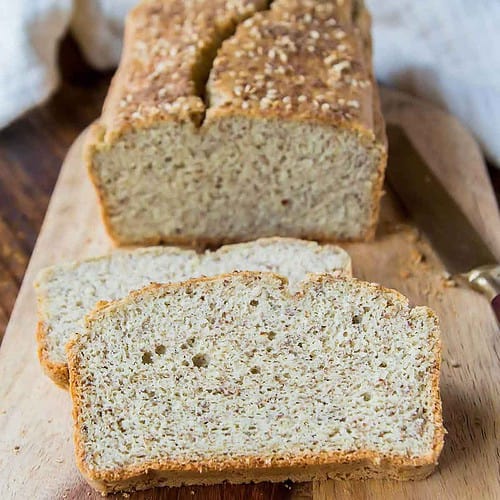

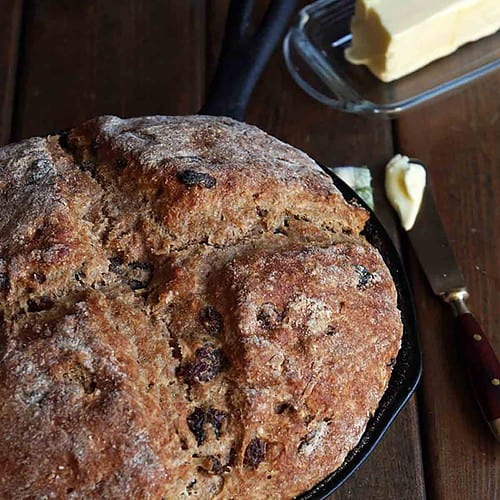
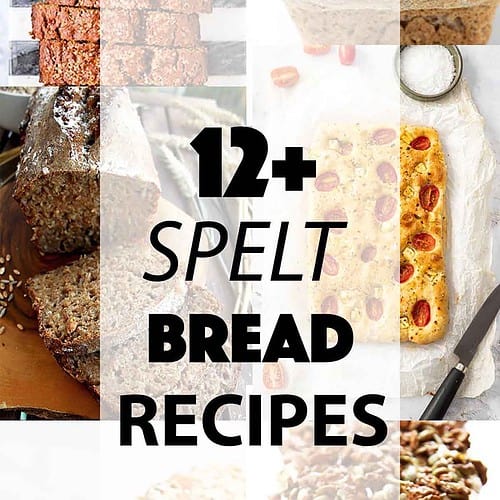
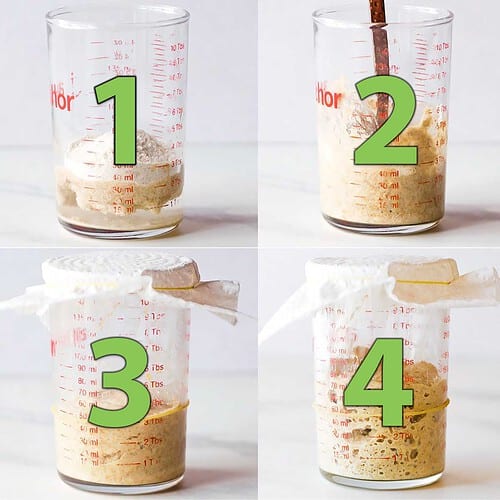
Lilian
Hi Jennifer thanks for your recipe. I’m on to my second loaf! I’d like to do the levain version.. am wondering with the large amount of starter is it because of the oil and honey? Usually I used 100gm for 500 gm flour.
Regina | Leelalicious
Hey Lilian, the large amount of leaven is to keep the ratios intact. This started out as a recipe to use up a good amount of discard (200g). But I got requests to also make a slow fermented version. I think overall the recipe might work with less leaven, but then I would probably add more flour and water to the rest of the ingredients. To not make it too complicated, I kept the 200 g for discard or leaven and adjusted the method only.
Jackie
Hello,
In the recipe without yeast, it's noted to start with 200g of active starter but the first step then says use 25g with 100g flour and 100g water. I'd love to try your recipe but need to clarify 200g or 25g of starter to begin?
Thanks so much!
Jennifer @ Leelalicious
Hi Jackie, thanks for your question! It is an either/or situation. If you have sourdough discard to use up, you only need 200g to make this recipe. Meanwhile, if you don't have any sourdough discard on hand or don't have enough, you can make the homemade leaven which is 25g sourdough discard or yeast, 100g flour, and 100g water. I hope this helps but let me know if you have any other questions. 🙂
Wei
Hi, do we need to achieve window pane after kneading? Thanks.
Regina | Leelalicious
Hi Wei, you don't have to, it's merely a good indicator that you have kneaded the dough sufficiently and worked up enough gluten. However, sometimes with using seed or whole grain flour with coarse bits the window pane may be hard to stretch out without tearing despite the dough being at correct texture.
Phoebe
I just tried making this and I've got to say - this is the best discard loaf recipe I've ever tried! Thank you for sharing this. 🙂
Jennifer @ Leelalicious
I'm so glad you liked it, Phoebe! 🙂
Stephanie
I love this recipe because it's easy and uses up a good portion of my leftover sourdough starter that I keep in the fridge. It's also a nice change to the more traditional chewier sourdough loaves. This is nice and soft, easy to cut, absolutely delicious bread!
Jennifer @ Leelalicious
Hi Stephanie! I'm so happy that the sourdough is helping you use up that hardworking starter and that you like the softer, fluffier texture. Happy bread baking! 🙂
Ruth
Would it work to substitute Multi-Grain flour for the Whole Wheat Flour?
Regina | Leelalicious
Yes I think it will, though results may vary. I have used rye flour instead of whole wheat before, and it tastes great. Just doesn't rise as much
Mary
Delicious! Thank you for the recipe.
Pat Major
This is my second time making this bread. It turns out fantastic! I did increase the yeast to 1 tsp. I also use bread flour, but no flax seed. I use my bread machine dough cycle, then finish up in a loaf pan. Thanks for a great recipe.
Regina | Leelalicious
So great to hear the recipe is working out for you
Heather
I have made this several times now, it is my go to sandwich bread. I often don't manage my time well enough to make true sourdough bread with my starter, and this is a great way to still get bread out of it. I usually double the recipe and make two loaves at a time. My only adjustment is that it always needs more water, about an extra 1/3 to 1/2 cup of water per double batch (1/6 to 1/4 cup for a single batch). Thank you for this recipe!
Regina | Leelalicious
So happy to hear you enjoy the sourdough sandwich bread. It is completely normal that with differing climates (humidity levels) and flour brands, there need to be small tweaks for water or flour amounts.
Leah
This is an excellent, one-loaf recipe! I made it without any substitutions and it turned out perfectly. Thank you!
Regina | Leelalicious
This makes me so happy to hear. It's a family favorite in this house. And I am glad it worked out so well for you too